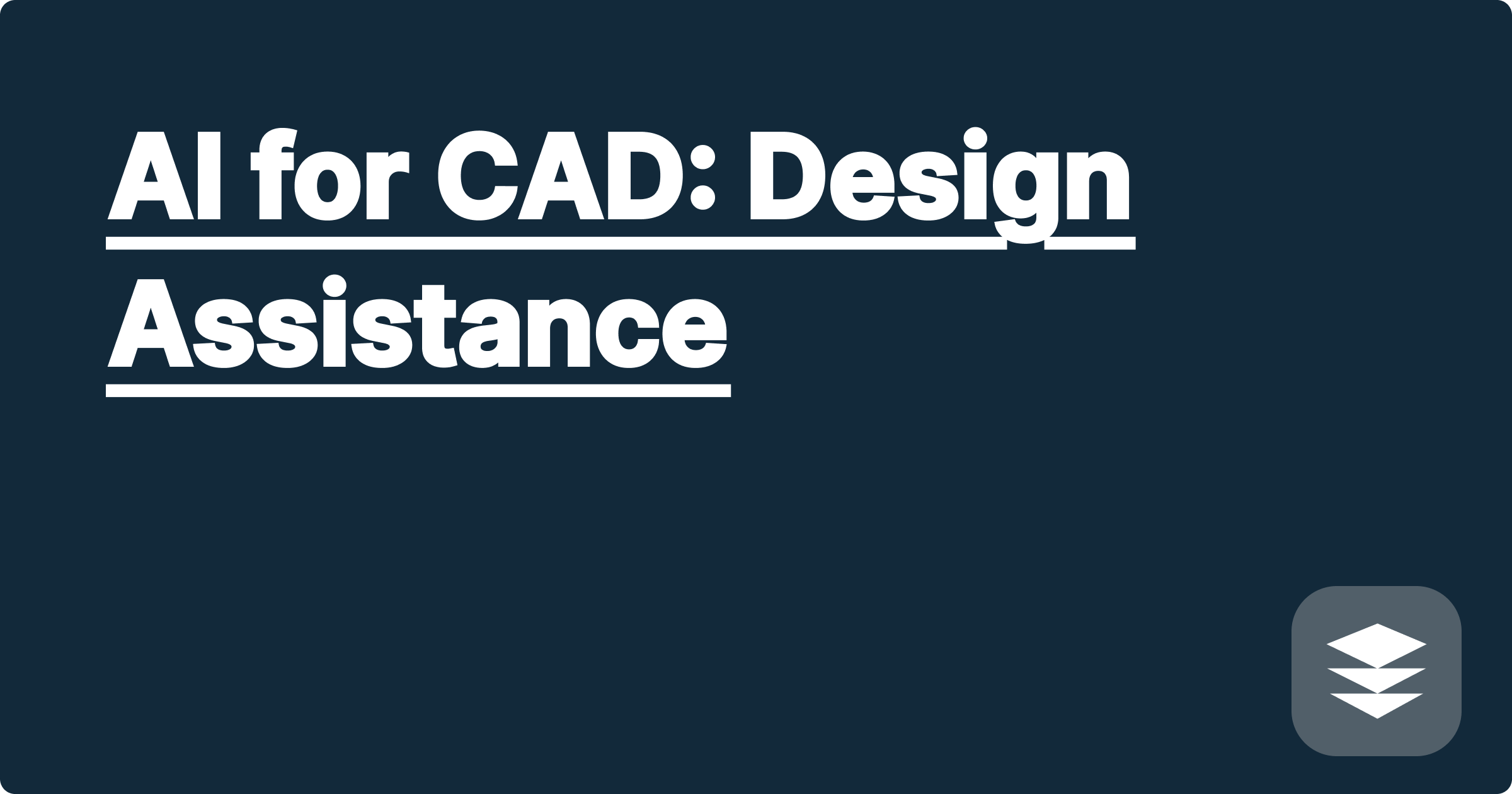
The ever-increasing complexity of engineering design poses a significant challenge for STEM students and researchers. Traditional Computer-Aided Design (CAD) software, while powerful, often requires extensive manual input and iterative refinement, consuming valuable time and resources. Artificial intelligence (AI) offers a promising avenue to address these limitations, providing intelligent design assistance that can accelerate the design process, explore a wider range of design options, and ultimately lead to more innovative and efficient solutions.
This intersection of AI and CAD is rapidly transforming the engineering landscape, making it crucial for STEM students and researchers to understand and leverage these emerging technologies. Mastering AI-powered design tools will not only enhance their academic performance but also equip them with essential skills for future careers in engineering and research. By embracing these advancements, they can position themselves at the forefront of innovation and contribute to groundbreaking discoveries across various disciplines.
The traditional CAD workflow typically involves manually creating and manipulating geometric shapes, defining constraints, and performing simulations. This process can be tedious and time-consuming, especially for complex designs involving intricate geometries and numerous components. Furthermore, the iterative nature of design often requires repeated modifications and simulations, further extending the development cycle. Another significant challenge lies in exploring the vast design space effectively. Traditional methods often limit exploration to a relatively small subset of possible designs due to time and resource constraints. This can lead to suboptimal solutions and missed opportunities for innovation. Finally, translating design intent into a tangible CAD model can be difficult, requiring significant expertise and experience with the specific CAD software.
AI offers a transformative approach to CAD design, providing intelligent assistance that addresses many of the limitations of traditional methods. AI tools like ChatGPT, Claude, and Wolfram Alpha can be leveraged to automate repetitive tasks, generate design variations, and provide insightful design recommendations. ChatGPT and Claude, for example, can be used to generate design ideas based on natural language prompts, enabling users to quickly explore different design concepts. Wolfram Alpha can be used to perform complex calculations and simulations, providing valuable data for design optimization. These tools can also be integrated with existing CAD software, enhancing their capabilities and streamlining the design workflow.
Begin by clearly defining the design problem and specifying the desired functionalities and constraints. This might involve researching existing solutions, identifying key performance metrics, and establishing design requirements. Next, explore potential design concepts using AI tools like ChatGPT or Claude. By providing these tools with natural language prompts describing the design problem and desired outcomes, you can generate a range of initial design ideas. These initial concepts can then be further refined using AI-powered generative design tools. These tools can automatically generate design variations based on specified parameters and constraints, exploring a much wider design space than traditional methods. Throughout this process, Wolfram Alpha can be used to perform calculations and simulations, providing data-driven insights to guide design decisions. Finally, the chosen design can be implemented and validated using traditional CAD software, leveraging the AI-generated insights to optimize the final design.
Consider designing a lightweight bracket for an aircraft component. Using ChatGPT, you can prompt the model with "Design a lightweight bracket capable of supporting a load of 1000 N with a safety factor of 2." ChatGPT can then provide suggestions for different bracket geometries and material choices. Wolfram Alpha can be used to calculate the stress and strain on the proposed designs under the specified load, helping to identify potential weaknesses and optimize the design for minimal weight. For example, you might use Wolfram Alpha to calculate the deflection of a cantilever beam under load using the formula: δ = (FL^3)/(3EI), where F is the force, L is the length, E is the modulus of elasticity, and I is the moment of inertia. This information can then be used to refine the bracket design in the CAD software.
To effectively integrate AI into your STEM education and research, develop a strong understanding of the underlying principles of AI and machine learning. This will enable you to choose the right AI tools for specific tasks and interpret the results accurately. Experiment with different AI platforms and tools like ChatGPT, Claude, and Wolfram Alpha to discover their strengths and limitations. Practice formulating effective prompts for these tools to generate meaningful results. Stay updated on the latest advancements in AI and CAD by attending conferences, reading research papers, and engaging with online communities. Collaborate with other researchers and students to share knowledge and best practices. Document your AI-assisted design process meticulously, including the prompts used, the results obtained, and the rationale behind design decisions. This will not only enhance the reproducibility of your research but also provide valuable insights for future projects.
Finally, remember that AI is a tool to augment, not replace, human ingenuity. While AI can automate tasks and provide valuable insights, critical thinking and engineering judgment remain essential for successful design. Embrace these powerful tools, but always maintain a critical perspective and evaluate the results carefully. By combining the power of AI with your own expertise, you can unlock new levels of innovation and achieve groundbreaking results in your STEM endeavors.
Conquer STEM: AI Practice Tests
AI Math Solver: Instant Solutions
AI Lab Assistant: Automate Tasks
Smart STEM Learning: AI-Powered
AI Science Solver: Easy Answers
Pass STEM Exams: AI-Powered Guide